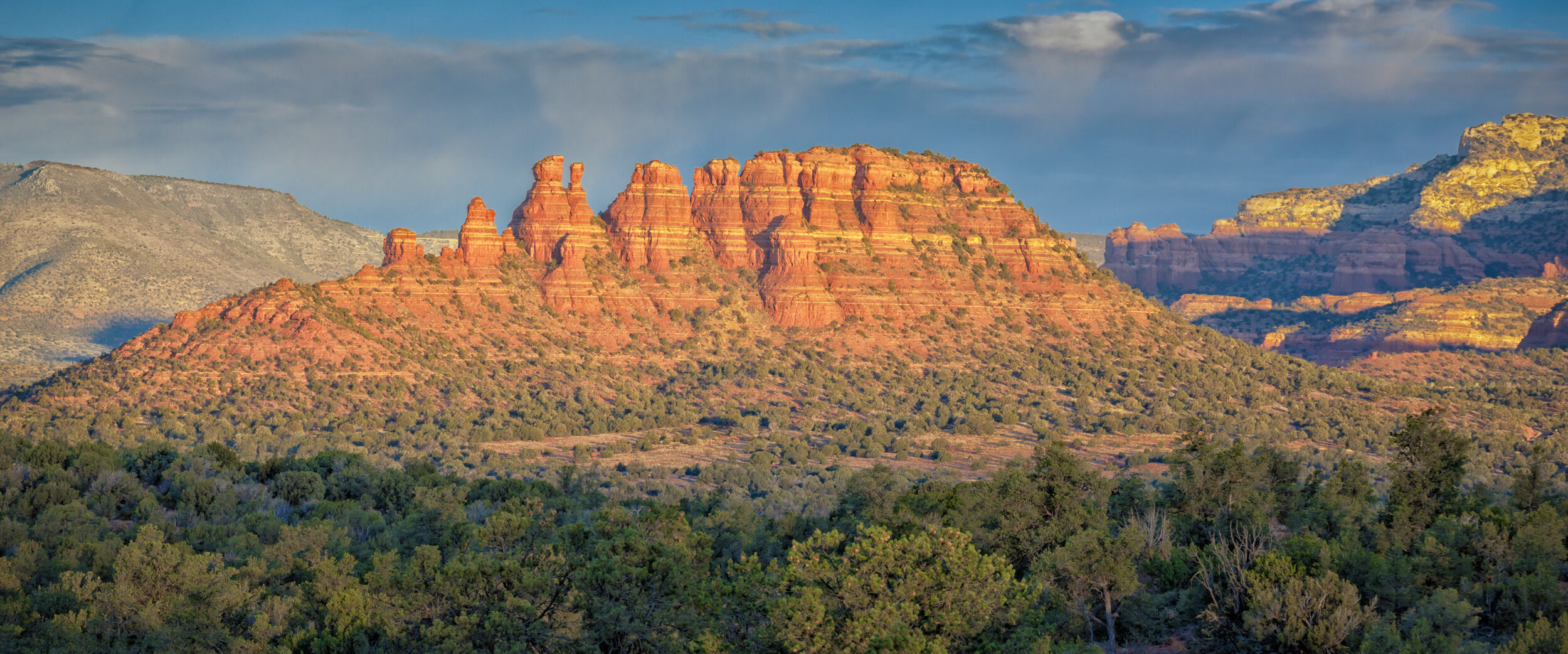
Red Rock Country
The Geology
The red rocks of Sedona are formed by a unique layer of rock known as the Schnebly Hill Formation, a thick layer of red to orange-colored sandstone found only in the Sedona vicinity. This sandstone, a member of the Supai Group, was deposited during the Permian Period.
The Schnebly Hill Formation is separated from the underlying Hermit Formation by an unconformity representing less than one million years of erosion or non-deposition. While the Hermit Formation was being deposited, the Sedona area was an arid floodplain surrounding river channels draining the Ancestral Rocky Mountains. Less the one million years later, the Pedregosa Sea had encroached upon Sedona and sand was blown into the sea from the nearby desert to form submarine sand dunes of the Rancho Rojo Member.
As the sea retreated, Sedona emerged from the sea as a tidal flat. Still, sand was blown out of the desert to the north into the Sedona area. The sand was reworked by the tides and deposited as the flat-bedded Bell Rock Member. Near Bell Rock, over 500 feet of sand accumulated before the sea advanced over the tidal flat for one last brief period, during which 8 to 10 feet of limestone, dolomite, and siltstone were deposited in the area. (Sources: Wiki, USDA Forest Service, Visitsedona)
Man’s early exploration here
Sedona is located in the interior chaparral, semi desert grassland, Great Basin conifer woodland biomes of northern Arizona. The first documented human presence in the Sedona area dates from between 11,500-9000 B.C. It was not until 1995 that a Clovis projectile point discovered in Honanki revealed the presence of the Paleo-Indians, who were big game hunters. Around 9000 B.C., the pre-historic Archaic people appeared in the Verde Valley. The Yavapai and Apache tribes were forcibly removed from the Verde Valley in 1876, to the San Carlos Indian Reservation, 180 miles (290 km) southeast. In the middle of winter, almost 1,500 people were marched to San Carlos. Several hundred lost their lives. The survivors were interned for 25 years. About 200 Yavapai and Apache people returned to the Verde Valley in 1900 and have since intermingled as a single political entity although culturally distinct residing in the Yavapai-Apache Nation.
Sedona’s touch of Hollywood
Sedona played host to more than sixty Hollywood productions from the first years of movies into the 1970s. Stretching as far back as 1923, Sedona's red rocks were a fixture in major Hollywood productions—including films such as Angel and the Badman, Desert Fury, Blood on the Moon, Johnny Guitar, The Last Wagon, and 3:10 to Yuma. However, the surroundings typically were identified to audiences as the terrain of Texas, California, Nevada, and even Canada–US border territory.

